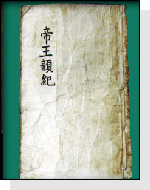- Park In- hwan (1926~1956)
- Park Su- geun (1914~1965)
- Kim Yu- jeong (1908~1937)
- Lee Hyo- seok (pen name Gasan) (1907~1942)
- Kim Dong- myeong (Choheo) (1901~1968)
- Han Yong- un (Buddhist name Manhae) (1897~1944)
- Namgung Eok (pen name Hanseo) (1863~1939)
- Yun Hui- sun (1860~1935)
- Yu In- seok (pen name Uiam) (1842~1915)
- Kim Byeong- yeon (pen name Nango) (1807~1863)
- Nam Gu- man (pen name Yakcheon) (1629~1711)
- Heo Mok (pen name Misu) (1595~1682)
- Heo Gyun (pen name Gyosan) (1569~1618)
- Heo Cho- hui (pen name Nanseolheon) (1563~1589)
- Sinsaimdang (1504~1551)
- Kim Si- seup (pen name Maewoldang) (1434~1493)
- Won Cheon- seok (pen name Ungok) (1330~ ?)
- Lee Seung- hyu (pen name Dongangeosa) (1224~1300)
Lee Seung-hyu (pen name Dongangeosa) (1224~1300)

He, with the pen name of Dongangeosa, was a literary civil servant during the late Goryeo Dynasty,
and was the ancestor of the Gari Lee family line. When young, he lost his father, concentrated his efforts on studies,
and passed the prestigious civil service examination in the year 1252 (the 39th year of King Gojong).
However, he gave up on the civil servant position, and went back to Gudong, Dutasan in Samcheok,
to do agricultural work by himself and serve his widowed mother for ten years.
As he started his civil service with a title called Seogi at the Gyeongheungbu Office in 1264 (the fifth year of King Wonjong), he went through several offices: Dobyeongnoksa, Gamchaleosa (supervisory function), Usagan (advisor to King), Yanggwang, Chungjeong and Anryeomsa. He further served as Miljikbusa (secretary to the King) in 1298 (the 24th year of King Chungyeol). He was dethroned from his position in 1280 (the 6th year of King Chungryeol) as he criticized the King for misgovernment and the King´s close aides for authoritarian rule. He then went back to his village, Gudong in Samcheok, built a shrine named Yongandang and lived a hermetic life, and wrote “Jewangungi” (history book) and “Naejeonrok”. In the later years of his life, he immersed himself in Buddhism, turned Yongandang shrine into Ganjang Temple, and donated his land.
As he started his civil service with a title called Seogi at the Gyeongheungbu Office in 1264 (the fifth year of King Wonjong), he went through several offices: Dobyeongnoksa, Gamchaleosa (supervisory function), Usagan (advisor to King), Yanggwang, Chungjeong and Anryeomsa. He further served as Miljikbusa (secretary to the King) in 1298 (the 24th year of King Chungyeol). He was dethroned from his position in 1280 (the 6th year of King Chungryeol) as he criticized the King for misgovernment and the King´s close aides for authoritarian rule. He then went back to his village, Gudong in Samcheok, built a shrine named Yongandang and lived a hermetic life, and wrote “Jewangungi” (history book) and “Naejeonrok”. In the later years of his life, he immersed himself in Buddhism, turned Yongandang shrine into Ganjang Temple, and donated his land.
Jewangungi
The book, which contains views on history by then new-stream historians when the Chinese Yuan dynasty meddled in the political affairs of our country,
is valuable material. It stresses strong pride in the superiority of our national culture and historical tradition,
marking an independent history book. It further is a vital cultural legacy that serves as the basis of our nation´s history stance.
최근 업데이트 2023-01-10


